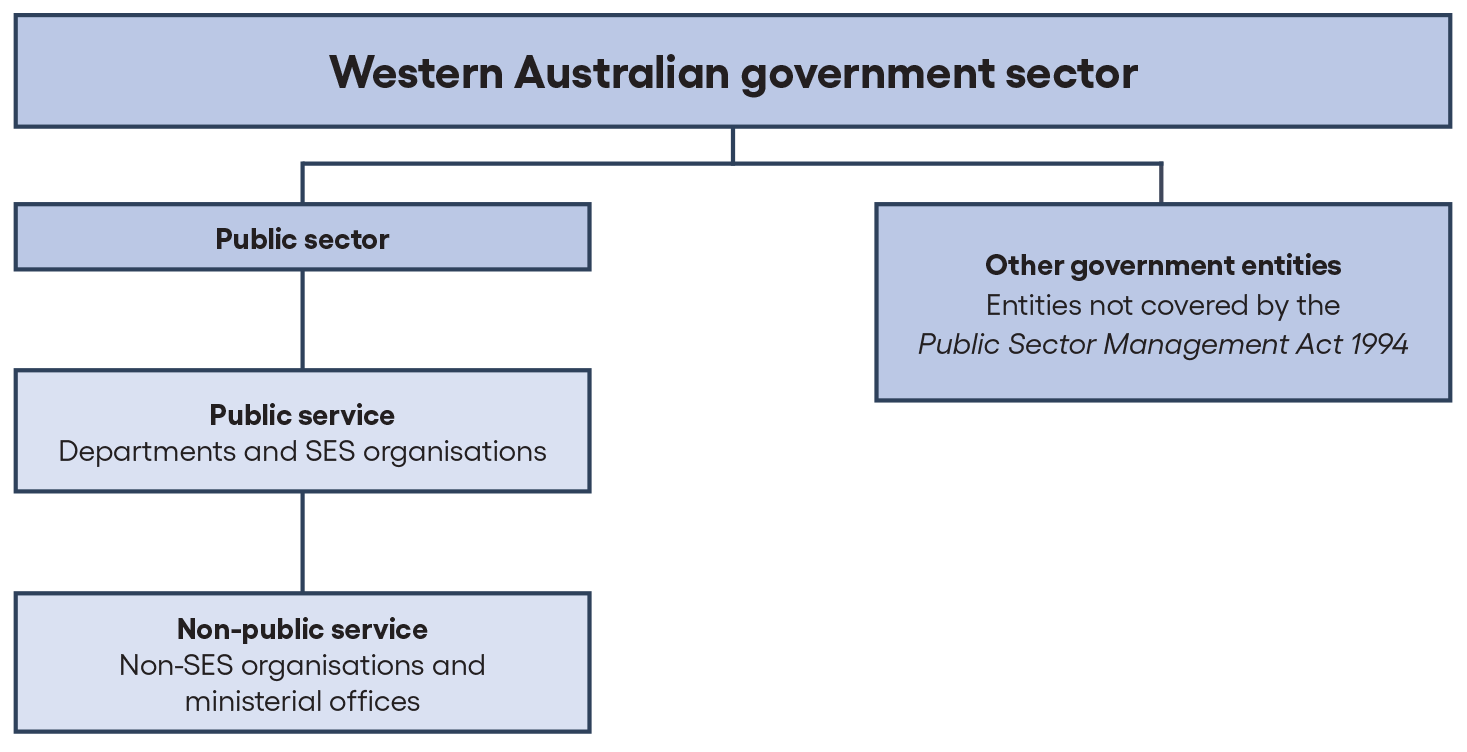The WA government sector is made up of a range of entities created for public purposes.
Under various pieces of legislation, these entities are defined as State trading concerns, State instrumentalities, State agencies and public statutory bodies (corporate or unincorporate) established by or under laws of the State.
Below we describe the main types of entities in the WA government sector.
Public sector
Show moreThe public sector is an overarching category of government entities that is made up of the public service and other entities that are not part of the public service.
The public sector is governed by the Public Sector Management Act 1994 (PSM Act) and has a high level of interaction with, and direction from, the government of the day.
Public service
Show moreThe public service sits within the broader public sector. It is made up of staff who are employed under Part 3 of the Public Sector Management Act 1994. Generally speaking, if you work in a department or are a senior executive service officer, you are part of the public service.
Departments
Departments are primarily responsible for providing policy advice and administrative support to their minister. Departments are established, divided, abolished and renamed under section 35 of the PSM Act by the Governor on the recommendation of the Public Sector Commissioner.
SES organisations
SES organisations are established by law to perform specific statutory functions, generally responsible through a board to the minister. Their chief executives and senior leaders are part of the senior executive service (SES) and are therefore part of the ‘public service’. Other employees are considered to be part of the public sector.
Non-public service
Show moreThis is another group of entities within the public sector but not within the public service. It consists of:
- ministerial offices
- organisations (such as the seven health service providers, Corruption and Crime Commission, and Environmental Protection Authority) set up under their own legislation but whose senior leaders are not members of the SES.
Ministerial offices
These are established to assist a particular political office holder.
Non-SES organisations
Like SES organisations, non-SES organisations are established by law to perform specific statutory functions, generally responsible through a board to the minister. All employees are part of the public sector.
Other government entities
Show moreOutside the public sector are other entities which operate with a large degree of independence from the government of the day. While they are still part of the broader government sector, they are not governed by the Public Sector Management Act 1994. These entities are bound by some of the same rules as the public sector including equal employment, misconduct and dealing with disclosures of wrongdoing. Examples include local governments, public universities, government trading enterprises and sworn police officers as well as a number of government boards and committees.
Machinery of Government changes
Show moreReform to the structure of the public sector may occur as government strives to implement a more effective approach to the provision of services to the community and a reduction of the unnecessary use of public resources. These reforms are known as machinery of government changes.
The Commissioner provides advice to the Government on appropriate machinery of government changes to achieve and maintain operational responsiveness and flexibility.
We also provide advice and support to agencies on machinery of government changes.



